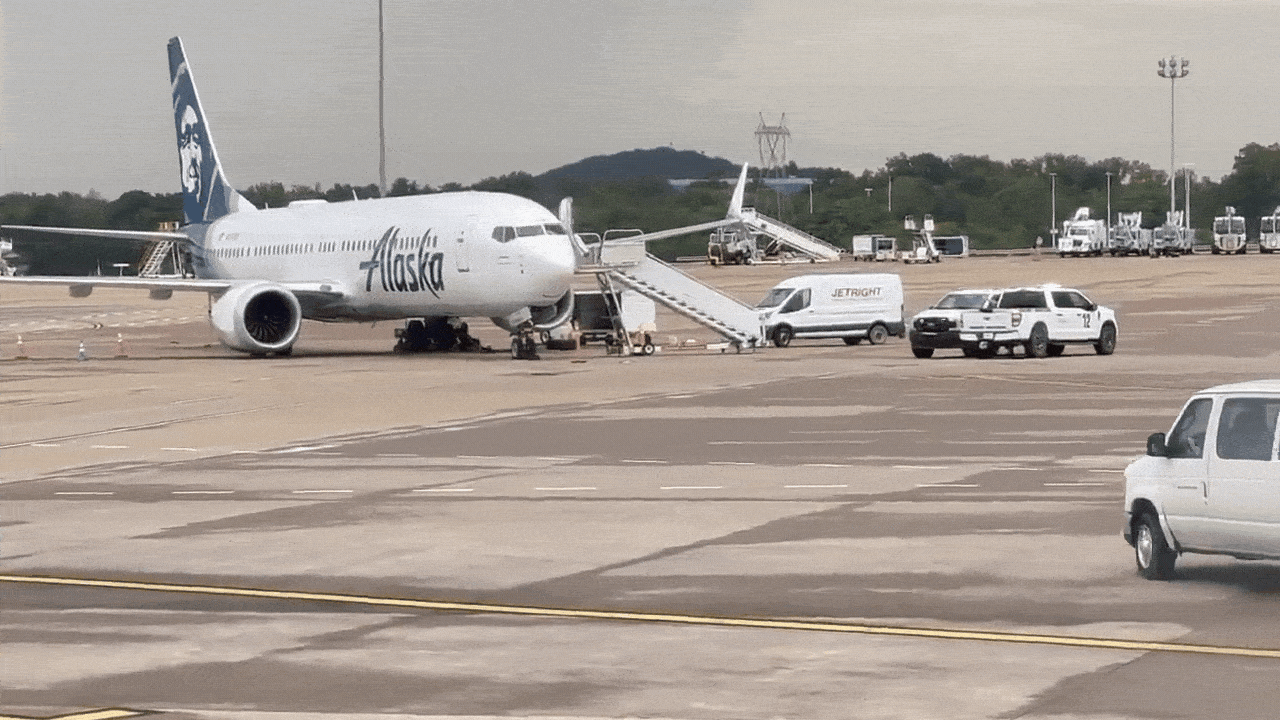
HOW QUICK ACTION BY ALASKA AIRLINES PILOT PREVENTED NEAR-COLLISION
An Alaska Airlines jet on Thursday was forced to abruptly halt its takeoff on the runway in Nashville to prevent a potential collision with a Southwest Airlines plane.
Alaska Airlines confirmed that their pilots spotted "a potential traffic conflict on the runway" and applied the brakes immediately to prevent the situation from getting worse. No injuries were reported, but the extreme heat from the sudden stop caused the tires on the Boeing 737 Max, scheduled to depart for Seattle, to go flat.
The National Transportation Safety Board (NTSB) is investigating the incident at the Nashville International Airport which occurred at around 9.15 am (ET), according to Chair Jennifer Homendy. "We are clearly very concerned about this (incident) and others we are investigating," Homendy told reporters.
The Federal Aviation Administration (FAA) is also looking into the incident, which involved Southwest Airlines Flight 2029, a Boeing 737-700, that had been cleared to cross the end of the same runway as an Alaska Airlines plane, as reported by AP.
The Alaska Airlines flight was carrying 176 passengers and six crew members. The airline arranged for another plane to transport the passengers to Seattle by Thursday night while inspecting the affected aircraft. Alaska Airlines expressed gratitude for the pilots' quick response, saying, "We’re grateful for the expertise of our pilots who immediately applied the brakes to prevent the incident from escalating."
According to tracking website Flightradar24, the Alaska plane was traveling at a speed of 104 knots (120 mph, 193 km per hour) on the runway before slowing down.
Southwest stated that they are in contact with the NTSB and FAA and will cooperate with the investigation. Alaska Airlines reported that maintenance technicians in Nashville are currently inspecting the aircraft involved in the incident.
There have been several close calls, or "runway incursions," in recent years, raising concerns about the safety of US air travel. NTSB chair Homendy had mentioned last November that while these incidents are "incredibly rare" compared to the number of flights, they indicate the aviation system is under stress.
Recent incidents include a close call in Austin, Texas, where a FedEx jet flew over a Southwest jet taking off in foggy conditions, and a collision between two Delta Air Lines planes on a taxiway in Atlanta. No injuries were reported in these incidents.
Alaska Airlines also made headlines in January when one of the door panels blew out on a plane flying from Portland and bound for Ontario. The plane's pilot first Officer Emily Wiprud on Thursday recalled her experience of operating the flight. Her initial indication of the unfolding crisis was a deafening blast that reverberated in her ears, accompanied by a sudden rush of air. The severity of the situation was immediately apparent to her, although the presence of a breach in the aircraft's fuselage remained unknown until the plane touched down.
"I didn't know that there was a hole in the airplane until we landed," Wiprud said. "I knew something was catastrophically wrong." Further complicating matters, her headset, along with the phones of two passengers and various airplane parts, had been forcibly ejected from the aircraft during the incident.